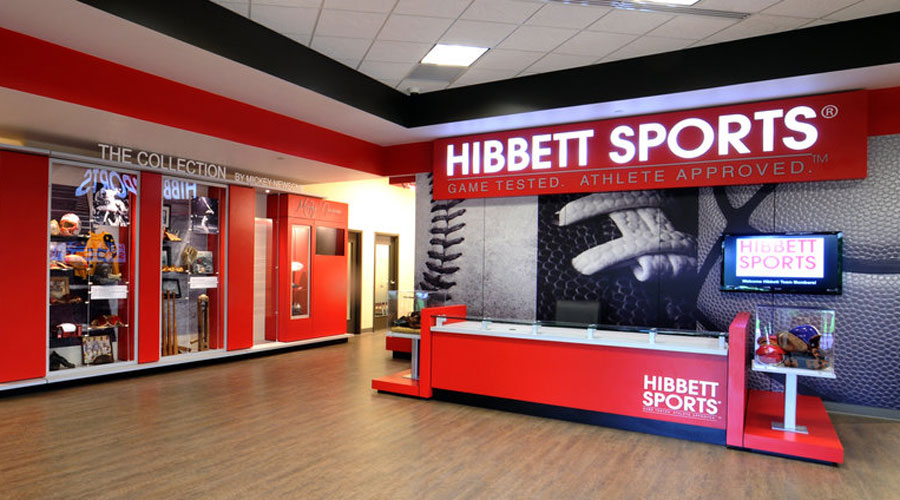By Thomas J. Ryan
Hibbett Sports Inc. (Nasdaq:HIBB) joined Dick’s Sporting Goods in admitting that warm weather was crimping sales of seasonal apparel. However, while Dick’s was able to raise its full-year guidance due to a robust third quarter, Hibbett delivered third-quarter results that fell short of Wall Street estimates and slightly lowered its guidance for the year.
“We are pleased with our back-to-school sales, and continue to see high-single-digit comps in footwear,” said Jeff Rosenthal, CEO, on the November 18 conference call with analysts. “Sales softened in September and October as apparel sales became more challenging, primarily in our cold-winter categories.”
In the quarter ended October 29, earnings slumped 21.8 percent to $14.6 million, or 66 cents a share, well below Wall Street’s consensus estimate of 74 cents. Net sales increased 3.8 percent to $237 million. Comparable-store sales inched up 0.7 percent. By month, comp sales were up 4 percent in August, negative 1.5 percent in September and negative 2.9 percent in October.
Gross margins eroded to 35.4 percent compared with 36.1 percent. Product margin decreased 55 basis points due to a higher mix of footwear sales resulting from soft sales in seasonal apparel and markdowns taken to reduce inventory. SG&A expenses increased to 23.6 percent of sales from 21.1 percent, partially due to the low comp increase. Additionally, investments in its omni-channel initiative and higher expenses related to employee-benefit costs, credit card fees and store maintenance impacted the rate.
Apparel Weakness
Elaborating on the category performance, Jared Briskin, SVP and chief merchant, said the quarter delivered a “very mixed performance.”
The back-to-school footwear business was “fantastic and led to significant gains early in the quarter,” he said. As BTS selling waned, however, comps were challenged by areas outside footwear and declines in seasonal categories. Said Briskin, “These difficulties prompted a more aggressive stance with markdowns and promotions to drive revenue and keep the inventory as clean as possible.”
Apparel was down low single digits in the quarter. While updates to non-seasonal categories “had a very positive impact,” performance product continued to struggle. Seasonal apparel saw “significant declines, as the challenging weather pattern is prompting our customers to wait as long as possible to buy seasonal apparel,” Briskin said.
Men’s apparel was up low single digits as investments in denim, athletic bottoms and polos sold well. Women’s and kids were down high single digits due to weakness in performance and seasonal apparel. Accessories suffered a low-single-digit decline, as strength in backpacks due to back-to-school selling couldn’t offset declines in socks. Licensed apparel was down double digits, with decreases in colleges broad-based across teams and categories. MLB licensed sales were helped significantly by the Cubs and Indians playoff run, but that was offset by weakness from last year’s playoff runs of the Royals and Rangers and general weakness in Braves and Cardinals merchandise.
Team sports sales were down low single digits. Cleats were up low single digits, with football and soccer both positive. Equipment was soft across all categories, down mid single digits. Fitness continues to see the most significant declines, Briskin said.
Footwear Strength
The best category was footwear, up high single digits with all genders performing close to that level. Basketball was led by strong performances from Retro Jordan and the Curry 2.5 from Under Armour. Lifestyle “had a fantastic back to school,” led by Nike’s Huarache, Air Force One, Roshe and Juvenate.
A “significant” footwear increase was also seen with Adidas, led by its Superstar, ZX Flux and Nomad models. Running “improved with explosive results” from Adidas’ Alpha Balance, strong performances from Under Armour Slingride and Bandit and strength from Nike’s Free and Pegasus. Added Briskin, “We continue to be very encouraged by future growth opportunities in footwear.”
Inventories increased 5.6 percent over last year, and were 2 percent higher on a per-store basis. “We are working diligently to identify opportunities to reduce inventory and improve productivity,” Briskin said. He added that Hibbett expects its digital initiatives to have a significant impact on inventory productivity next year. Expectations for the end of the fourth quarter are for inventory levels to be flat to slightly elevated, but down on a per-store basis.
In other developments, Hibbett opened its first store in California in the quarter. Overall, it opened 13 in the period, expanded two and closed five, bringing its count to 1,067 in 34 states. The company also began the full rollout of a new POS system that’s expected to help reach customers in stores and online. Said Rosenthal, “With our 6 million-plus loyalty members and our store base, we believe that we can drive additional business that we have not been able to capture both in store and digitally. We have made significant progress on our e-commerce initiative and will deliver next year.”
Looking Ahead
Based on third-quarter results, Hibbett now expects EPS in to be in the range of $2.82 to $2.88, down from a previous range of $2.93 to $3.02. Merchandise margin is expected to be relatively flat compared to a previous expectation of flat to slightly positive versus the prior year.
The poor early start to cold-merchandise selling follows a mild winter in its markets that impacted fourth-quarter results the prior year. In the Q&A session, Rosenthal admitted that it “actually seems to be significantly worse than last year” from a weather standpoint.
Rosenthal added that the company decided to become more aggressive this year in marking down cold-weather merchandise earlier, following the prior season’s fallout that led to high carryover inventories.
“We feel pretty confident that if the weather does come, we are in a good inventory position and we have opportunities to get more if we needed,” Rosenthal said. “But the bigger risk we felt was to carry some of that inventory out of Q4 and into next year. We know we have opportunities from a productivity perspective and margin perspective that we would like to capitalize on.”
Photo courtesy Hibbett Sports
















